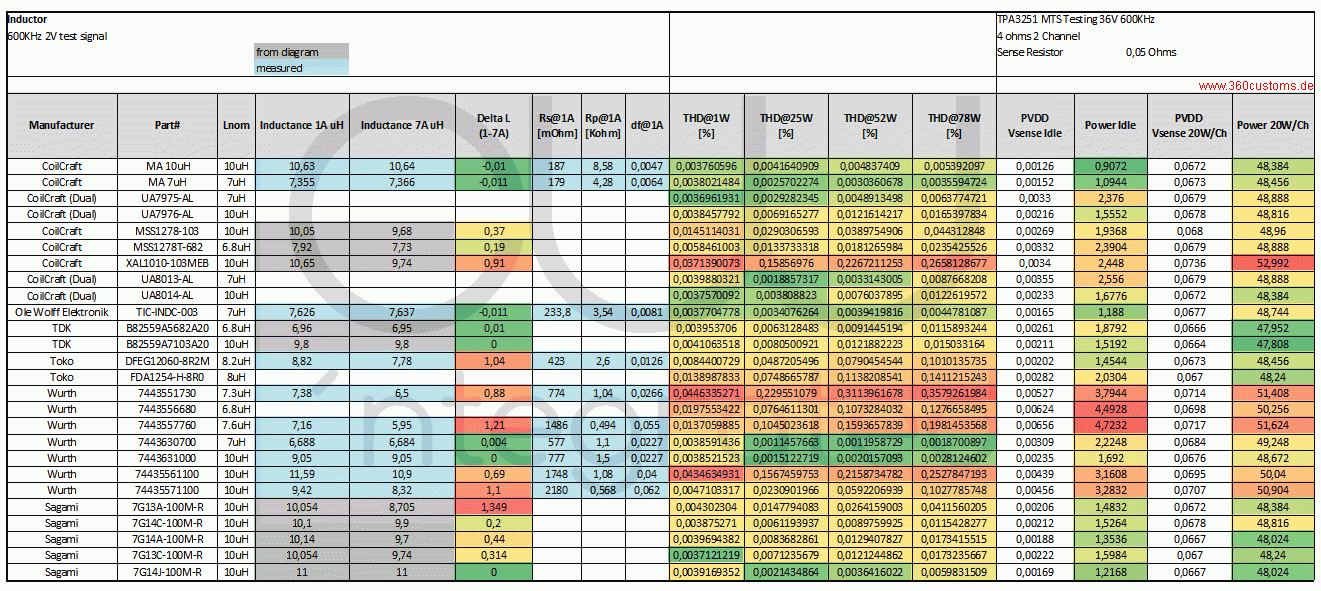Nous le saurons une fois que j'aurai envoyé le FB100 pour le test ASR. Mais c'est environ 90W à 100W.
Le TPA325x se clipse tôt s'il est limité en tension ou en courant. L'utilisation d'une alimentation régulée à haute puissance signifie uniquement que le bloc d'alimentation ne constituera pas un goulot d'étranglement et empêchera l'ampli d'être limité en tension ou en courant. Par exemple, si vous utilisez une alimentation non régulée sur le TPA325x et que vous la conduisez à des niveaux d'écrêtage avec des ondes sinusoïdales, la tension d'alimentation s'affaissera/diminuera, donc elle écrêtera plus tôt. Si vous utilisez une alimentation régulée à faible puissance, soit l'alimentation s'éteindra en raison de la protection contre les surintensités, soit la tension de l'alimentation chutera horriblement (cela dépend de la mise en œuvre). Ainsi, l'utilisation d'un bloc d'alimentation de 400 W sur le FB100 signifie uniquement que l'alimentation ne sera pas la cause d'un écrêtage précoce. Mais la puissance de sortie du FB100 devrait toujours être la même.
Pour les amplis TPA325x avec implémentation PFFB, le « genou » de l'écrêtage se comporte différemment, selon la conception du PFFB, car les comportements près du point d'écrêtage sont différents en fonction de la stabilité du PFFB, donc certains auront un THD+N plus élevé près de l'écrêtage, d'où le « genou » arrivera plus tôt.
Les chiffres 83W/4R et 48W/8R que vous avez fournis sont la puissance « non écrêtée ». Mais si vous autorisez les amplis à écrêter comme sur le CEA-2006/490A, les amplis TPA325x devraient avoir la même puissance de sortie en supposant que les alimentations utilisées sont égales. Et en supposant que l'ampli ne s'éteigne pas.
Pour les modules amplificateurs TPA325x avec LED CLIP/FAULT, une fois que les LED CLIP clignotent légèrement, vous pouvez savoir que le module amplificateur est au niveau du genou de l'écrêtage sans utiliser d'outils de mesure.
Les LED du clip FB100 commenceront à « pulser » à 20 V/4 R, ce qui signifie que le « genou » de l'écrêtage sera d'environ ~90 W à ~100 W. La seule façon de confirmer est d'effectuer des tests de puissance et de distorsion. Le genou d'écrêtage est le point où avant que le THD+N commence à grimper de façon exponentielle. De plus, toutes les charges 4R ne sont pas créées égales

, certaines ont 4,1 ohms, et ainsi de suite haha. Ainsi, différents testeurs obtiendront des résultats légèrement différents. Même l'utilisation d'une charge de 3,8 ohms par rapport à une charge de 4R aura un impact sur le THD+N. C'est pour cela que nous souhaitons envoyer notre ampli chez ASR pour avoir une référence standard et ainsi tout le reste sera égal.

, certaines ont 4,1 ohms, et ainsi de suite haha. Ainsi, différents testeurs obtiendront des résultats légèrement différents. Même l'utilisation d'une charge de 3,8 ohms par rapport à une charge de 4R aura un impact sur le THD+N. C'est pour cela que nous souhaitons envoyer notre ampli chez ASR pour avoir une référence standard et ainsi tout le reste sera égal.

